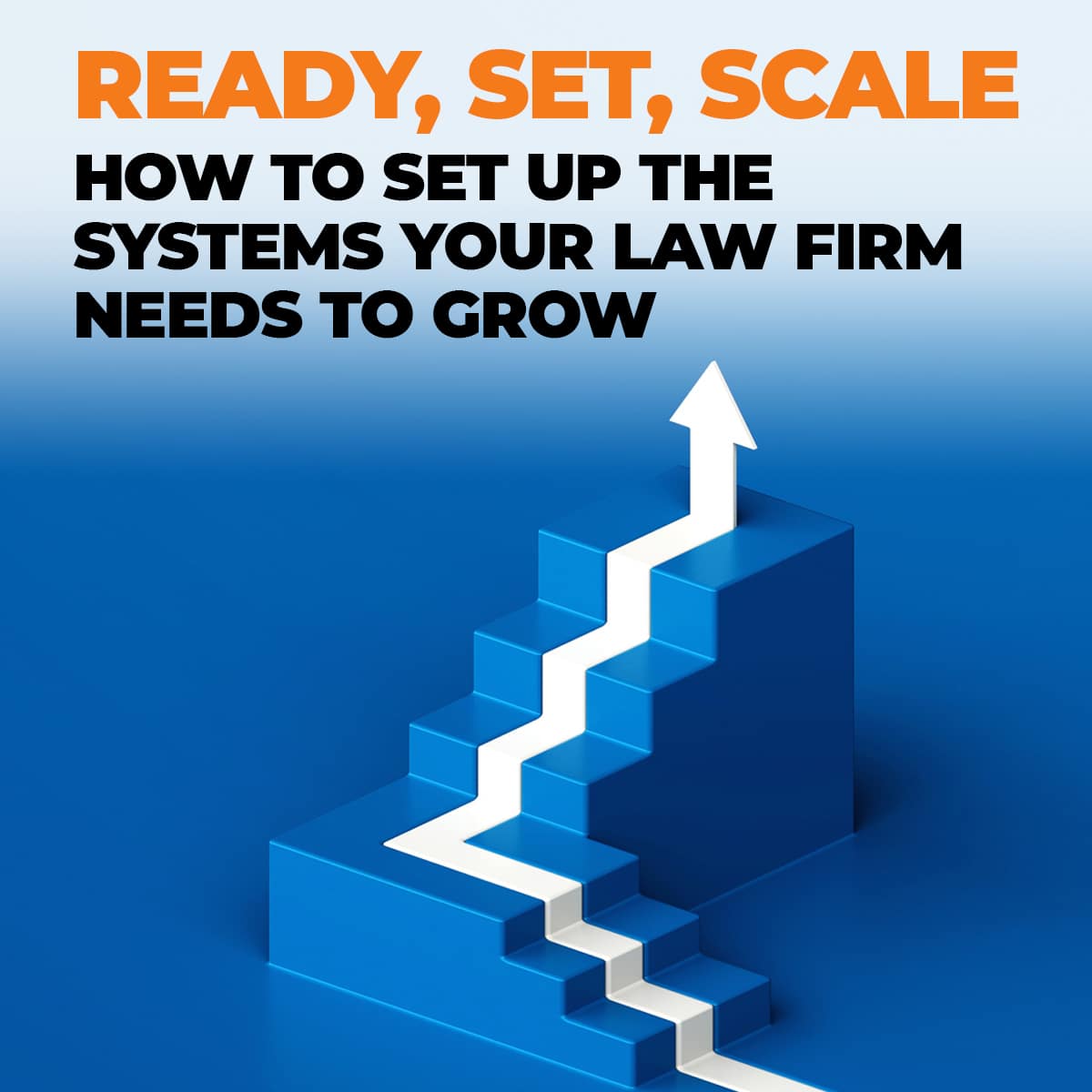In “Time to Build Your Team,” Karen and David Skinner gave us five ways to improve your law firm’s hiring process. Starting a new job, though, is a leap of faith. A solid employee onboarding process makes the leap much easier — for both the new hire and your law firm.

Table of contents
- Starting a New Job Is a Leap of Faith
- Six Steps for Improving Your Employee Onboarding Process
- Step 1: Advance Preparation
- Step 2: First-Day Orientation
- Step 3: Role-Specific Targeted Training
- Step 4: Establish Goals and Feedback Channels
- Step 5: Check in Regularly
- Step 6: Review and Adjust the Onboarding Process
- This Month: Review Your Existing Onboarding Process
Imagine you’re starting a new job.
You arrive on your first day full of anticipation, but your office isn’t ready. You can’t log into your computer. You don’t have an email address or a phone number. There’s no one around to explain how the practice management platform works, what you’re supposed to be working on, who’s going to be assigning you work, or even where to find the coffee. You muddle through, creating workarounds and figuring stuff out as different lawyers hand you work, but everything takes too long. You’re frustrated. Your colleagues don’t trust your skills, and after a few months, it’s clear that you’re not profitable … or happy.
Now, put yourself in Jonah’s shoes.
He arrives to an office that’s all set up, with clear instructions for logging into the system and accessing email and other core practice support technologies. He gets a warm welcome and a tour of the office (and the coffee machine), followed by a meeting with his supervisor. Together they go over the work he’ll be doing and a timeline for increasing his skills and responsibilities. He knows exactly what he has to do — it’s all in his 90-day onboarding plan. The firm’s policy is to go steep and deep. Jonah works with one lawyer in a specific practice area and masters the skills needed to do that work before receiving training on more complex tasks. By the end of the first quarter, he’s profitable and on track to hit the firm’s objective of billing 2.5x his salary by the end of the year.
Starting a New Job Is a Leap of Faith
Just as you’ve put time, effort and money into hiring someone, your new employee has invested time and effort into their job search. They have researched, stressed over interviews, and probably stayed awake at night worrying about leaving their old job and starting a new one.
A solid employee onboarding process makes the leap easier.
Six Steps for Improving Your Employee Onboarding Process
You need new employees, whether business and administrative staff or attorneys, to add value and hit profitability targets as soon as possible. Here are six steps to include in your onboarding process to help you accomplish precisely that.
Step 1: Advance Preparation
It seems obvious, but you need to invest time before your new employee arrives to determine exactly what you want them to do.
- What administrative tasks will they take on?
- What types of legal matters do you want them working on first?
- Do you have processes in place for them to follow?
- Who will be assigning work to them?
The Steep and Deep Approach to Onboarding
Expecting new employees to work on whatever comes their way will frustrate everyone. We recommend the steep and deep approach: Train new employees on one or two types of work at a time and funnel work assignments through one person at the firm to avoid overwhelm.
Once you know what you want new employees to do, you can ensure all necessary equipment is set up for them when they arrive, including computers, email accounts, access to practice support technologies and file permissions.
Step 2: First-Day Orientation
Make the first day spectacular. You want your new employees to go home knowing they made the right decision to join your firm. Not only will this increase retention, but it will smooth their transition, build confidence, and get your new hires working productively much faster.
Set up their office properly. If they’re working in person, give them a tour of the office. Introduce the team, especially the key personnel your new hire will be working with.
Review your firm’s policies, culture and expectations, as well as any communication protocols, privacy regulations and client interaction guidelines you have in place.
Step 3: Role-Specific Targeted Training
Start with targeted training on your new employee’s initial daily responsibilities and the core tools they’ll be using. Give them the playbooks or processes to follow and instructions for using your practice management software, timekeeping tools and any other specialized platforms they need.
Don’t overwhelm people with information. Focus on the essential skills they need immediately to complete their work. Then, implement a training program that adds additional skills over time.
Step 4: Establish Goals and Feedback Channels
Every new employee needs clear, achievable goals for the first 90 days. What do you expect them to be able to do after the first month, the second and the third?
Set these goals at the outset and include learning objectives and measurable job performance targets.
- Do you expect them to hit certain hourly targets?
- Do they have utilization or revenue goals?
- Are there specific tasks they need to be able to accomplish independently?
Establish a routine for providing and receiving feedback. Regular, constructive feedback helps new employees adjust their performance and meet expectations immediately, without waiting until the end of their probationary period or the end of the year (when it’s too late).
Step 5: Check in Regularly
Early and frequent check-ins can prevent misunderstandings, keep new employees on track to meet their learning objectives and make them feel like valuable team members.
We recommend daily check-ins at the beginning so they know what they need to work on each day, and you can answer questions and address any immediate problems.
Step 6: Review and Adjust the Onboarding Process
Like any other process in your firm, your employee onboarding process will (and should) evolve. Include an after-action review as part of the onboarding process. Immediately after the initial onboarding period, ask your new employees about their experiences and what could be improved.
- What worked well?
- What didn’t?
- Was there some training they needed earlier?
- How would they improve the process?
This feedback is invaluable and will help you continuously improve your onboarding process.
This Month: Review Your Existing Onboarding Process
Your goal is to have every new employee working productively and profitably as soon as possible. Developing a consistent and effective onboarding process will help you achieve this goal and build a stronger, happier firm.
Karen Dunn Skinner and David Skinner help lawyers and legal professionals build more efficient, productive and profitable practices. They’re the co-founders of Gimbal Lean Practice Management Advisors and lawyers with over 20 years of experience each in Canada and Europe. Together, they’re the exclusive Global Advisors on Legal Process Improvement to the International Institute of Legal Project Management. They write and speak regularly, facilitate legal process improvement projects across North America, and have taught Gimbal’s LeanLegal® approach to thousands of legal professionals.
In “Ready, Set, Scale,” Karen and David Skinner help you prepare your practice for the growth you want with time-saving systems. Download the complete guide.

Tired of the ‘feast or famine’ cycle?
Download “Ready, Set, Scale” and learn how to set up the systems you need to grow.
* Create processes and SOPS
* Automate key workflows
* Learn what to delegate and to whom
Image © iStockPhoto.com.

Sign up for Attorney at Work’s daily practice tips newsletter here and subscribe to our podcast, Attorney at Work Today.















